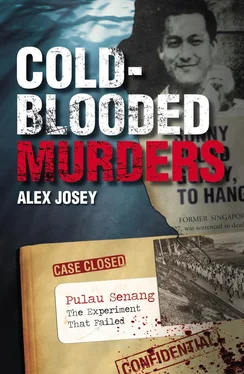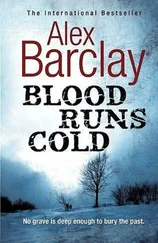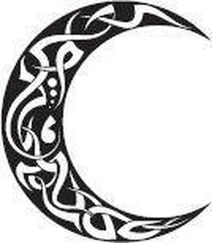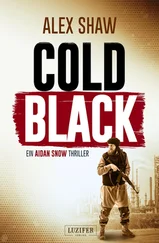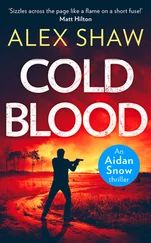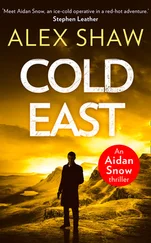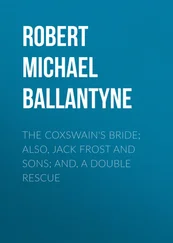Alex Josey - Cold blooded murders
Здесь есть возможность читать онлайн «Alex Josey - Cold blooded murders» весь текст электронной книги совершенно бесплатно (целиком полную версию без сокращений). В некоторых случаях можно слушать аудио, скачать через торрент в формате fb2 и присутствует краткое содержание. Жанр: Криминальный детектив, на английском языке. Описание произведения, (предисловие) а так же отзывы посетителей доступны на портале библиотеки ЛибКат.
- Название:Cold blooded murders
- Автор:
- Жанр:
- Год:неизвестен
- ISBN:нет данных
- Рейтинг книги:5 / 5. Голосов: 1
-
Избранное:Добавить в избранное
- Отзывы:
-
Ваша оценка:
- 100
- 1
- 2
- 3
- 4
- 5
Cold blooded murders: краткое содержание, описание и аннотация
Предлагаем к чтению аннотацию, описание, краткое содержание или предисловие (зависит от того, что написал сам автор книги «Cold blooded murders»). Если вы не нашли необходимую информацию о книге — напишите в комментариях, мы постараемся отыскать её.
Cold blooded murders — читать онлайн бесплатно полную книгу (весь текст) целиком
Ниже представлен текст книги, разбитый по страницам. Система сохранения места последней прочитанной страницы, позволяет с удобством читать онлайн бесплатно книгу «Cold blooded murders», без необходимости каждый раз заново искать на чём Вы остановились. Поставьте закладку, и сможете в любой момент перейти на страницу, на которой закончили чтение.
Интервал:
Закладка:
The Judge turned to the defence of Lim Kim Sian and Koh Ah Tiaw. Lim remained silent. There was only one witness against him-Chia had said Lim was armed with a cangkul. In the lower court Chia had said that Lim had a pipe. There was therefore a discrepancy. Lim remained silent. Koh said nothing in his defence. Again, the witness was Chia. In the lower court Chia said Koh had a stick in his hand. Before the jury he swore it was a cangkul. The defence said that as their identification of Lim and Koh depended on Chia’s evidence alone it would be unwise to convict them, in these circumstances.
Chia Tiong Guan, Koh Teck Thow and Low Chai Kiat, were represented by Mr Braga. They all gave evidence on oath. Chia Tiong Guan had been identified as a rioter by one witness, who could not say if Chia was armed. Chia said the witness had a grudge against him. Remarked the Judge: “My only comment is this: if it were true that Foong Lai Chuan had a grudge against the accused, does it not seem likely, to say the least, that Foong would say that he didn’t see if the accused carried a weapon. If he had a grudge is it not more likely that he would say the accused did carry a weapon?”
Koh Teck Thow admitted hacking at a punishment cell with an axe to free a friend, but he denied taking part in any riot. A ‘sworn brother’ of Low Chai Kiat testified that Low never took part in the rioting. “You will ask yourself why this ‘sworn brother’ did not call the accused to come with him to the beach.”
The Judge again reminded the jury of the danger of convicting an accused on the evidence of only one witness. Gan Kim Siong, for instance. The only evidence against him substantially was that of Marlow, the mechanic. He said he saw Gan in the boat when Marlow had been forced into the boat by Teng Eng Tay. “That is not, I suggest, sufficient evidence to justify a conviction, and you will in these circumstances have little difficulty in returning a verdict of ‘Not Guilty’ against him. It would in my view, be improper for you to consider a possible alternative verdict of escaping from lawful custody against him. Such an offence has no connection with the offence of murder with which he has been charged.”
The following were also accused by one witness: Tay Teck Bok, Soh Ah Kang, Ng Pang Leng, Low Chai Kiat, Leow Ah Chai, Koh Ah Tiaw, Chia Tiong Guan, Lim Kim Sian, and Tan Tian Lay. Five of them-Tay Teck Bok, Leow Ah Chai, Lim Kim Sian, Soh Ah Kang and Koh Ah Tiaw had been identified as rioters solely by Chai, the rehabilitation officer who had been on the island for a year and knew the faces of them all well. “If there is a reasonable doubt as to Chia’s identification you will acquit them.”
Kwek Kok Wah had been identified by two witnesses. They said he threw large stones at them. “Does this evidence leave you with a reasonable doubt about him being involved in the rioting in which Dutton and the others were killed? Did he see the witnesses fleeing and threw a stone at them because he was frightened?”
As for two lists of names of those said not to have been rioting, the Judge cautioned the jury: It would be dangerous to accept these lists at face value. It did not necessarily follow that because a detainee’s number appeared on the lists that they did not in fact take part in the uprising.
The Judge referred to rumours of settlement attendants being involved in corruption. They were alleged to have taken detainees’ letters to relatives in Singapore. They invariably asked for money. For every $50 the relatives sent back the settlement attendant demanded a cut of $15, and the gangster $5. “Rather an expensive way of getting money-a total payment of $20 to get $30,” observed the Judge. Clearly the Judge did not place much importance on these rumours.
On the value of evidence generally given by prosecution witnesses, the Judge said that a riot was a shattering and terrifying experience-‘a shouting and yelling mob… this heavy barrage of bottles… the shouts of ‘kill’ and ‘burn’… Can we, sitting here, have any conception, gentlemen of the jury, of the fear, the terror, the excitement and the panic that must have been in the minds of the witnesses, some of whom had literally to run for their lives?”
Because these witnesses had not, ‘in the agony of this uprising been able to give completely consistent accounts of what happened, consistent accounts as to the sequence of events, and as to the movement and positions of themselves in relation to themselves and others at any given moment, can they be fairly and properly criticised as being witnesses on whom you can place no reliance, as liars, as they have been called?’ The speed of this disaster spoke for itself: it was a lightning stroke, a constantly fast-moving and ever-changing scene.
The Judge advised the jury to consider the discrepancies, the inconsistencies and contradictions which appeared in some of the evidence of 60-odd witnesses. These did exist and the defence were entitled to the fullest benefit and advantage they could get out of them. “But you must ask yourself what effect they had in your mind. All I am asking you to do is that you consider it in the context in which it arose, in the heart of this violent uprising.”
For four days the Judge summed up. He praised the jury for the ‘unflagging interest and attention’ they had given the case from start to finish. They now had to consider their verdict. “If you accept the prosecution evidence, (and whether you do or not is entirely a matter for you) I, myself, do not see how you can escape the conclusion that the common object of this unlawful assembly was to wipe out Pulau Senang, to destroy it, and with it, its superintendent, those in authority with him, together with informers and anyone else who thwarted this unlawful assembly in its progress. It was their open commonly declared and proclaimed object to kill and to destroy. It appears (if you accept the prosecution evidence) to have been a well planned and boldly executed operation. And again I do not see (if you accept the prosecution evidence, and whether you do or not is for you to decide), how you can escape the conclusion that murder was an offence which the members of that unlawful assembly knew to be likely to be committed in the prosecution of the common object. The very nature of the unlawful assembly itself, quite apart as I say from the evidence as to the plotting and the planning of it, the very nature of the unlawful assembly itself, the weapons which the members of it openly collected, armed themselves with, carried and used, the conduct of the members of the unlawful assembly, was but the logical follow-on and consummation of the declared object. The shouts of ‘burn’ and ‘kill’, ‘come down and be assaulted to death’, ‘death to the informers’-in all their various connotations, repeated time and time again; and finally the climax to all this, the killing of Dutton, of Singham and of Tan Kok Hian. Whichever way you look at the evidence I do not myself see how you can escape the conclusion that the crime of murder was committed. Here again I hasten to add that all this is a matter entirely for you to consider, but I repeat again that if you accept the prosecution evidence I do not see how you can escape the conclusion that murder was committed, committed in circumstances of such utter brutality and callousness that beggars description. How can it possibly (you will ask yourselves) be said, gentlemen of the jury, that those who were concerned in striking those terrible blows on these three persons did not do so except with the intention of killing or causing such bodily injury as they knew to be likely to kill, or were sufficient in the ordinary course of nature to kill?”
The Judge said that Mr Suppiah had, in his address to the jury ‘rather lavishly’ sprinkled alternative verdicts for them to consider. One of them was culpable homicide not amounting to murder. The Judge said he could only repeat again, by what possible stretch of the imagination could it be said that those persons who struck those fearful blows did not mean to do it, did not intend to kill? Mr Suppiah had also suggested a possible alternative verdict was arson. The Judge reminded the jury that they were concerned with murder. The accused were not charged with destroying buildings. It would be quite improper for the jury to consider arson as an alternative verdict. He directed the jury that in this case arson was not an alternative verdict. The accused were charged with murder. Three verdicts were open to them. Firstly, that the accused were members of this unlawful assembly. Secondly, that the common objects of unlawful assembly were to cause the deaths of Dutton, Singham, Tan Kok Hian, Cartoon, Chia Teck Whee, and others, and to destroy Pulau Senang. Thirdly, that while these accused were members of this unlawful assembly, one or more of them in the persecution of the common object of that assembly murdered Dutton (the first charge), Singham (the second charge), Tan Kok Hian (the third charge) and fourthly, that murder was an offence which the accused knew to be likely to be committed in the prosecution of the common object. Those accused who were members of that unlawful assembly were guilty of murder and the jury must return a verdict accordingly. But if the jury was satisfied beyond a reasonable doubt that the accused were members of that assembly but had a reasonable doubt as to whether some of them were still members at the time when Dutton, Singham and Tan Kok Hian were killed, then those in respect of whom the jury had a reasonable doubt would not be guilty of murder. An alternative verdict of rioting could be returned. Or, if the jury had any reasonable doubt about any of the accused being members of the unlawful assembly, they could return a verdict of ‘Not Guilty’, and that would be the end of the case. “If you are left in any reasonable doubt as to whether the accused, or any of them, committed these offences, you must give the accused the benefit of the doubt in every case. But if on the other hand, you are satisfied beyond a reasonable doubt, you are sure that some or more, or all of them, committed the crimes with which they had been charged, then of course you will do your duty and return a verdict against them.”
Читать дальшеИнтервал:
Закладка:
Похожие книги на «Cold blooded murders»
Представляем Вашему вниманию похожие книги на «Cold blooded murders» списком для выбора. Мы отобрали схожую по названию и смыслу литературу в надежде предоставить читателям больше вариантов отыскать новые, интересные, ещё непрочитанные произведения.
Обсуждение, отзывы о книге «Cold blooded murders» и просто собственные мнения читателей. Оставьте ваши комментарии, напишите, что Вы думаете о произведении, его смысле или главных героях. Укажите что конкретно понравилось, а что нет, и почему Вы так считаете.
